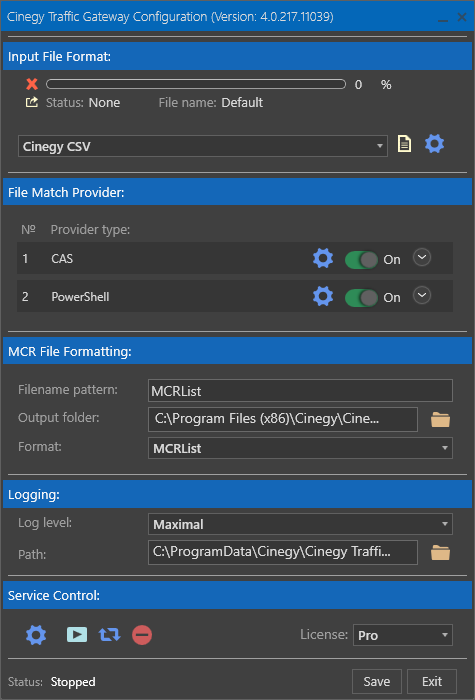Introduction
Reading time ~2 minutes
Since the core of Cinegy Traffic Gateway runs without a user interface as a background service, most user configuration operations take place using a configuration utility. This can be started by double-clicking the "Traffic Gateway" icon on the Windows Desktop:

The configuration client is arranged in top-to-bottom order representing the logical flow of operations as they pass through the Cinegy Traffic Gateway processes. There are 3 main stages that a loaded list passes through: input, processing and output.
The input stage involves detection or submission of a file, and matching of that file to a defined channel and the related resources that will be used when converting the input abstract list to a concrete, complete Cinegy Air playlist ready for loading.
The processing stage involves digestion of the input elements, organizing the defined input events into Cinegy application specific events and activities, as well as matching of indicated material for playout (via the 'house ID' key) to some distinct media. This matching can be performed via scripting (using Microsoft PowerShell scripts) to perform custom matching actions – for example, against a file share containing MXF files, or it can be performed using a running instance of the Cinegy Archive Service to look up media within the Cinegy Archive database.
|
Caution
|
The Cinegy Archive Service lookup provider is only available with the Cinegy Traffic Gateway PRO license. |
The final stage involves the creation of an actual output file. Currently, Cinegy Traffic Gateway supports creating complete playlist outputs that will be used by Cinegy Air (MCRList or MCRActiveApproved files) which may be inserted into existing Cinegy Air playlists.
The following articles describe configuration settings for each of these stages in detail.